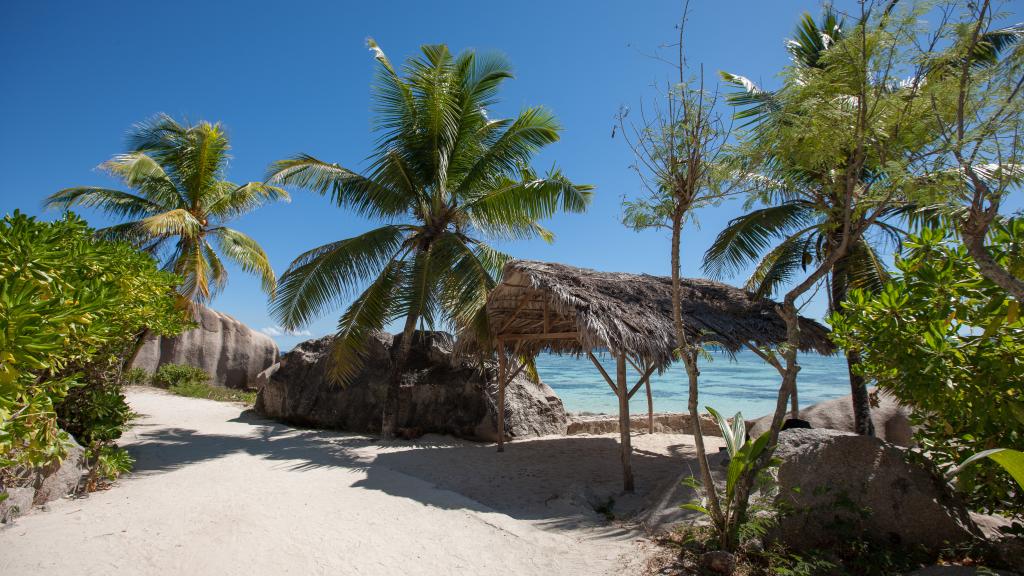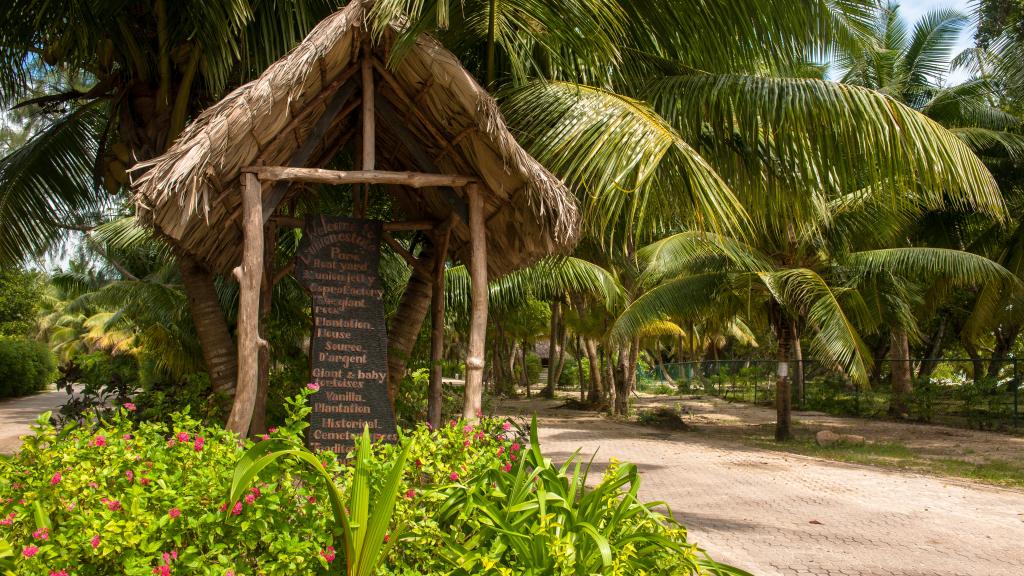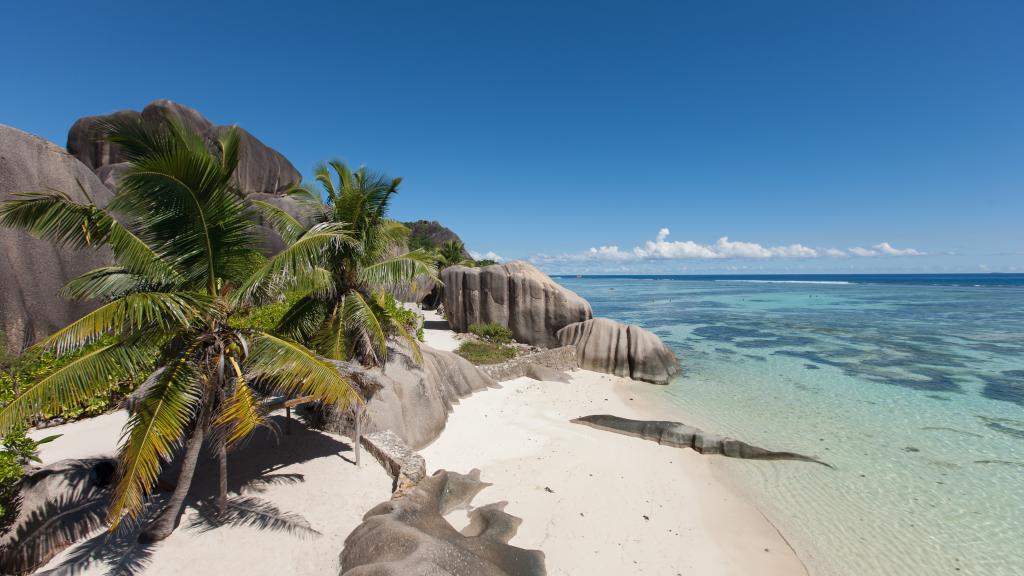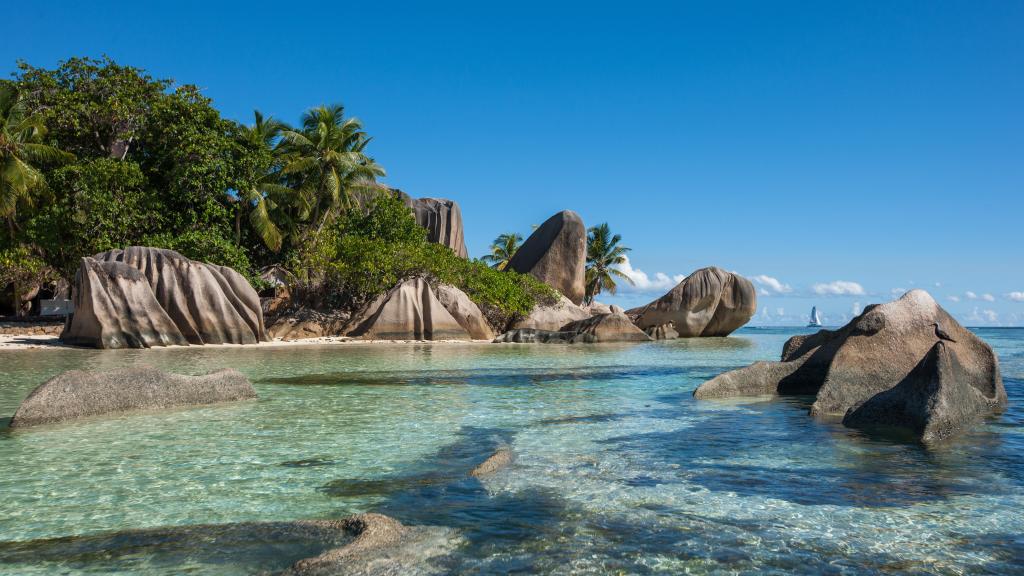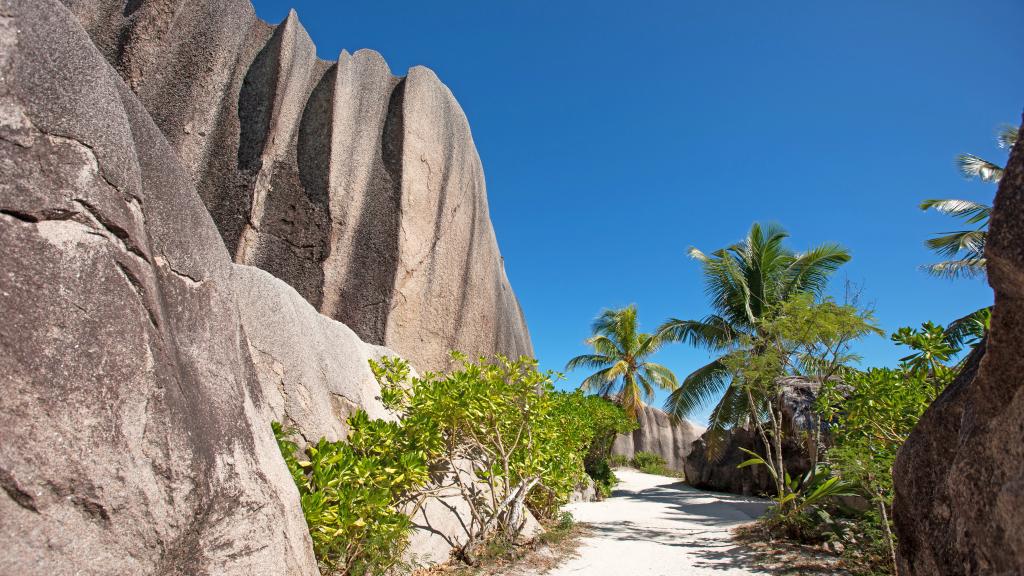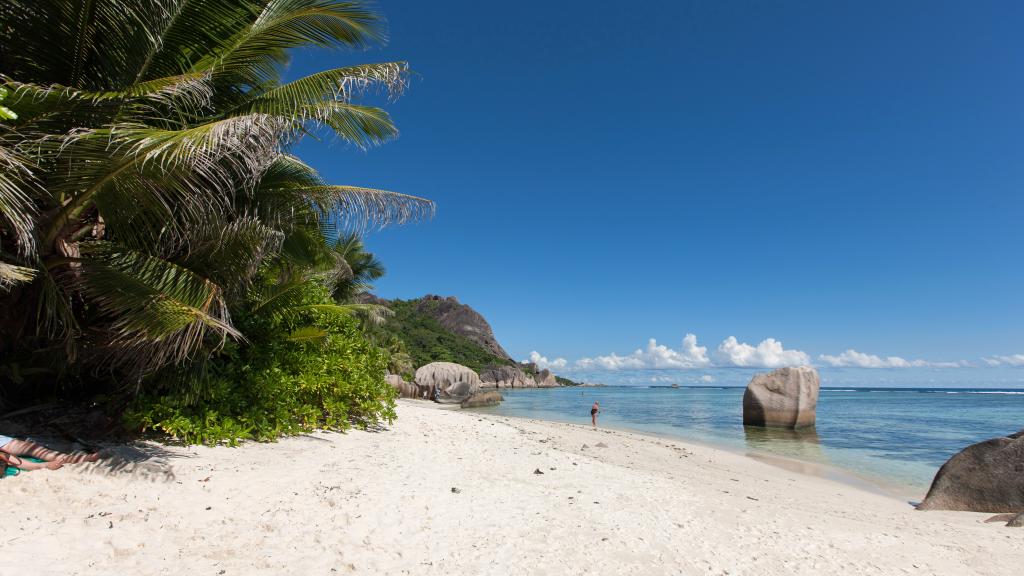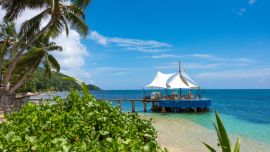L'Union Estate
The Seychelles' Most-Photographed Beach
There is a beach on La Digue that is so beautiful it may well ruin all other beaches for you: Anse Source d'Argent. Tens of thousands of tourists flock here every year for the towering granite rock formations, some of the most-photographed formations on Earth. That said, there is a lot of history to be discovered on the way!
At the southern end of La Réunion, cross over to the l'Union Estate, a former coconut and vanilla plantation that is a real insight into La Digue colonial history. The park has an entrance fee of SCR 150 (about €10). At the end of the coastal road, behind a footpath, begins this park/coconut plantation. Until the 1980s, coconuts were actually grown here in the fields, and copra (the dried flesh from which coconut oil is processed) produced. Before palm oil conquered the world market, coconut oil had, for centuries, been the natural product widely-used in the kitchen. These days, it is celebrating a comeback of sorts in some places. The traditional copra mill with an ox complements the culture of the island, and offers you the chance to see copra being made.
Of further historical significance is the old cemetery, which is also located on the l'Union Estate, and can even be visited. The first settlers of La Digue are buried at this location. Besides that, the Aldabra Giant Tortoise enclosure is another popular tourist attraction. Unfortunately, the animals are always kept inside this enclosure, in contrast to Curieuse Island, a nearby nature reserve where they can roam free. Near the tortoise enclosure is the vanilla plantation. This was another plant that used to be grown on La Digue, but due to the lack of pollinating insects on the island, the pods can only be harvested if humans pollinate each flower individually by hand. This used to be the method used to export vanilla, and today you can still see some of the plants being grown in metre-long rows.
The Plantation House is one of the oldest examples of French colonial architecture on La Digue, and was once the home of a Mauritian family who became wealthy on La Digue. The building was created using precious wood and covered with palm leaves (Plantation House National Monument, open daily: 7.00 - 17.00, tel. 423 42 40, Website).
Neighbouring the vanilla plantation is a 40-metre monolith in the sky. The Giant Union Rock occupies an area of 4,000 m², and is estimated to be around 700 million years old.
The walk eventually leads out into the powerful, imposing rock formations that flank the narrow Anse Source d'Argent beach across its 1 km length. Here, the rocks, the green palms, the white beach, and the turquoise ocean blend in perfect harmony.
Next chapter: Veuve Reserve
